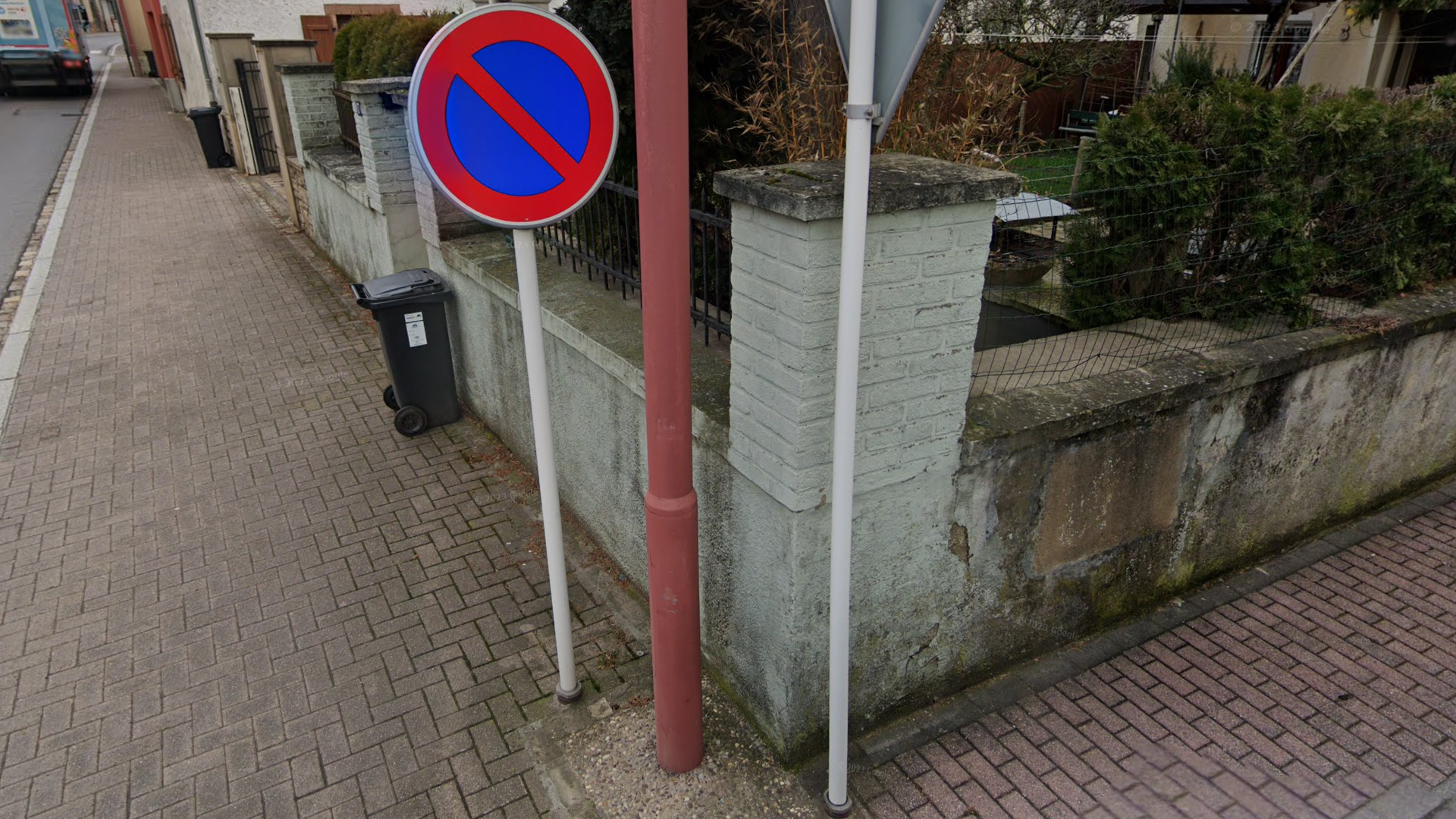
Luxembourg
Luxembourg uses long yellow plates with a blue strip on the left.
Since Luxembourg is a small country, foreign cars with white plates are somewhat common.
NOTE: There are only a few other European countries that use yellow plates for private vehicles:
The Netherlands has yellow plates front and rear.
The UK has yellow rear plates.
Some pre-2009 French cars have yellow rear plates.
Bollards are black and white. They are wedge-shaped and have grey reflectors. Some have a distinctive indent in the lower half.
NOTE: They look more or less identical to German bollards. The most notable difference is that the reflectors on German bollards have two bolts, while in Luxembourg they have three.
The bollards of Belgium, the Netherlands and France look very different.
Chevrons are black with yellow arrows. You may also rarely come across blue and yellow chevrons.
NOTE: None of Luxembourg’s neighbours use these chevrons.
The only other European countries with this colour scheme tend to have wildly different landscapes: Iceland, Norway, Finland, Ireland, and Portugal.
Almost all coverage in Luxembourg is either Generation 2 or Generation 4.
Generation 3 is rare, but does exist.
Luxembourg is a highly multilingual country. It has three administrative languages: Luxembourgish, French, and German.
French is the language that is mostly used for public communication. Road signs and advertisements are usually in French.
Presence of German on signs is less common compared to French, but certainly not non-existent.
Directional signs are yellow with a thin black outline. Town names are written in uppercase. The signs have a pointed tip. They are completely surrounded by a frame, making them very recognizable.
Some directional signs feature road numbers:
Regional road numbers have 1 or 2 digits and a red box.
Local road numbers have 3 digits and a yellow box.
The frames mentioned in the previous two tips are also commonly found on a lot of other road infrastructure.
NOTE: Denmark notably also uses a lot of similar-looking frames on road infrastructure. A recognizable difference is that the corners on Luxembourg frames are more square, while Danish frames are more rounded.
Almost all Luxembourgish road signs will be supported by a white signpost.
NOTE: While not nearly as common, white signposts are also found in France.
Street signs are almost always short and usually have a white background. The exact designs vary from town to town.
A very common design is the one pictured on the left in the example image, with slanted blue corners.
NOTE: Belgian street signs often appear short as well, but can have other background colours – not just white.
In addition, Dutch street signs almost always have a blue background and tend to be much longer than they are tall.
Bus stop signs are blue and always have this exact design. The bus has six windows.
NOTE: Bus stop signs in Belgium and the Netherlands have significantly different designs. For example, the Belgian bus stop sign always has a yellow signpost.






















